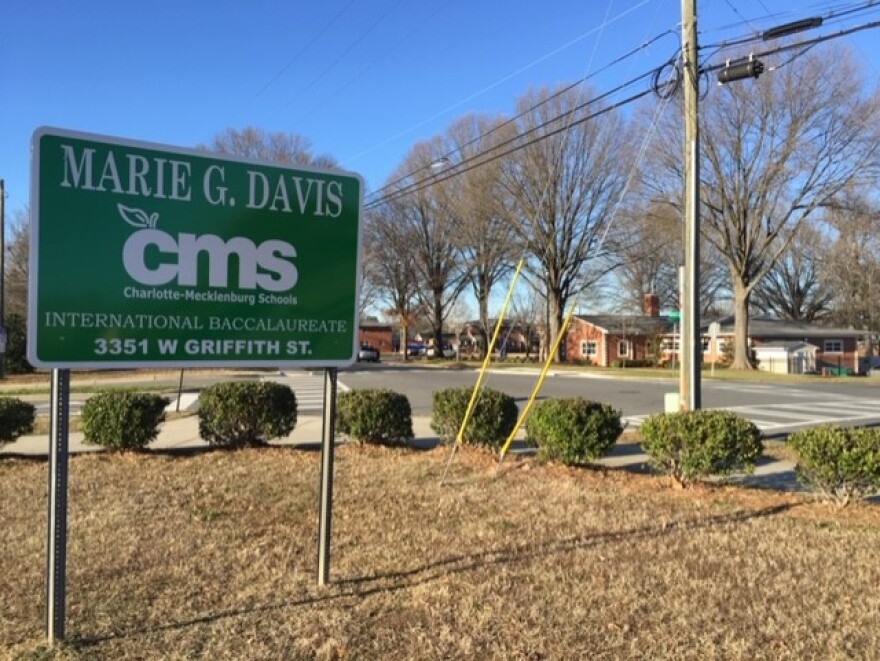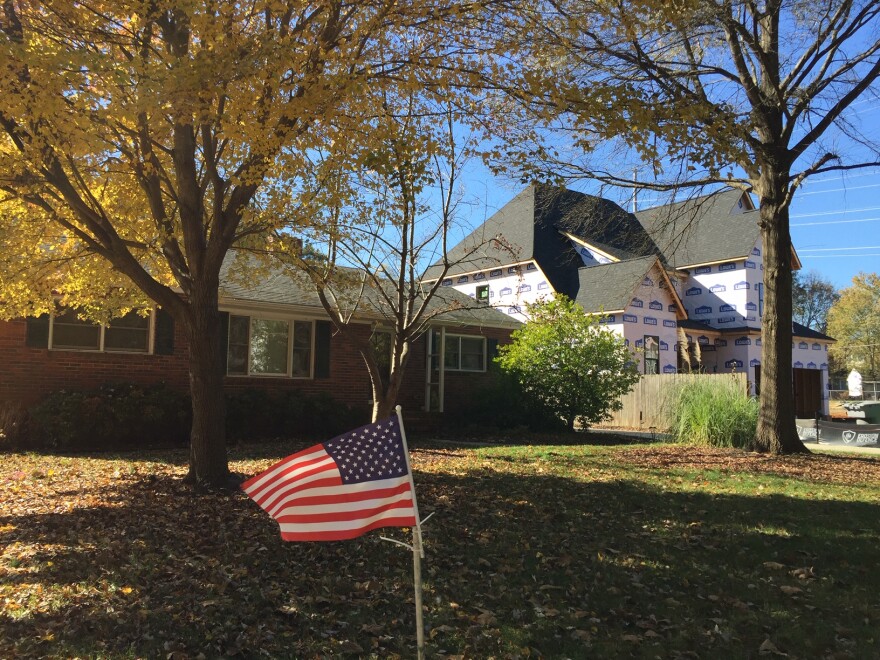When Charlotte-Mecklenburg Schools combined Dilworth and Sedgefield elementary schools in 2017, it was seen as part of a bold experiment to undo segregation, keep families in public schools and help more students thrive. But that’s only part of the story.
Viewed through one lens, the pairing is a resounding success.
When the school board was revising its student assignment plan, Sedgefield was a high-poverty, low-performing school that had been abandoned by many families in the neighborhood just south of uptown Charlotte.
Nearby Dilworth Elementary was jammed full, serving some of the city’s most affluent neighborhoods. In a district that was about 28% white, 70% percent of Dilworth students were white. Only 3% of Sedgefield’s were.
Today the new Dilworth Elementary – now known as the Sedgefield campus and the Latta campus – is about 64% white, 19% black and 12% Hispanic.
But here’s the catch: CMS created this setting by carving off the neighborhoods where most of the low-income and black students from Sedgefield and the old Dilworth lived. Those children were reassigned to nearby schools that already served mostly students of color.
The two-campus Dilworth is earning strong academic marks and attracting Sedgefield neighborhood families. It’s a hit with Sarah Hiccox, whose twin daughters started at Sedgefield Elementary before the pairing. She says that was because she couldn’t get them into a magnet school.
"There’s just a new sense of energy in the school," Hiccox said. "You can feel it when you walk into the building – I tell people it’s hard to describe. You just feel the excitement."
But the kids from Southside Homes public housing, who used to make up most of Sedgefield’s enrollment, now attend Marie G. Davis, a K-8 school that’s one of the least diverse schools in a district known for resegregation. When CMS took its official count in September, Davis had only three white students – less than 1%.
The mother of a first-grader at Marie G. Davis, who was interviewed at Southside Homes and wouldn’t give her name to a reporter, says the reassignment felt like a betrayal.
"We had no idea," she said. "A lot of parents was looking forward to their kids going to Sedgefield because of the diversity, because your child gets to interact with other classes of life other than their own, to see the difference vs. what you try to say, or what you see on TV or what you protect them from in the neighborhood. So that was a big slap in the face."
Like A 1,000-Piece Puzzle
To understand how this happened, it helps to remember the complexity of the CMS student assignment review that ended in 2017. It took almost three years — and it was a bit like dumping a thousand-piece puzzle onto a table. Every school, every neighborhood, every magnet program was in play.
Dilworth Elementary families watched closely. Just a few years before, CMS had converted Dilworth from an arts magnet to a neighborhood school serving Dilworth, Myers Park, Wilmore and part of the First Ward neighborhood.
Meredith Murchison was one of the parents who rallied to the new Dilworth neighborhood school.
"We were an A-plus school," she recalls, "and that was built through a lot of hard work."
A-plus is a reference to North Carolina’s school letter grades, which are based primarily on students’ pass rates on state exams (the A-plus label has since been eliminated). Top grades tend to go to schools like Dilworth, where most students come from homes with educational advantages. D’s and F’s almost always land on high-poverty schools where most students are black or Hispanic – like Sedgefield Elementary, which had a D.
One of the goals of the student assignment review was to break up economic and racial isolation. But that wasn’t the only goal: The school board was also trying to keep kids close to home, protect successful schools and balance enrollment between overcrowded and underfilled schools.
Dilworth was crowded, and families suspected change was coming. They tuned in for the April 2017 meeting where then-Superintendent Ann Clark revealed the proposal to merge Dilworth and Sedgefield.
Dilworth parents worked their network of volunteers and contacts to protect their school and their neighborhoods.
"There were families coming together, dozens and dozens of very involved families meeting and talking and looking at the plan," recalls Jenn Loeffler, who was incoming PTA president at the time. "Those meetings went on from the day the plan was announced until the day the plan was passed in May."
Filling Magnet Schools
CMS also decided to fill some of its less popular magnet schools by carving off small neighborhood zones, whose students would automatically be enrolled. One of those underfilled magnet schools was Marie G. Davis, located across the street from Southside Homes.

For more than a decade, CMS had struggled to attract students and build a good academic reputation there. The year before, CMS changed Davis from a K-12 military/leadership magnet to a K-8 International Baccalaureate school. The building had room for almost 1,500 students, but that fall only about 500 had opted in. That’s where CMS decided to send the Southside kids from Sedgefield.
Meanwhile, the First Ward students who were in the Dilworth Elementary zone were reassigned to First Ward Creative Arts. The First Ward students accounted for most of the black and low-income enrollment at the old Dilworth, and they were being sent to a magnet school that was — and remains — about 95% nonwhite.
Shaping The New Dilworth
Meanwhile, CMS listened to Dilworth Elementary families in deciding to keep the Dilworth name for the newly paired school and put Dilworth’s popular principal, Terry Hall, in charge.
"She’s a Dilworth resident. This is her neighborhood. This is not just her school," Loeffler recalls. "She’s a person who cares very deeply and passionately about kids and education."
Throughout the process, CMS leaders had talked about making sure everyone was informed and heard. During the transition year, Loeffler and Murchison say they saw – and took part in – good-faith efforts to reach families from lower-income neighborhoods. But they say no matter how well-intentioned CMS’ efforts were, the system is difficult for families with all the advantages — and nearly impenetrable for those without.
"It doesn’t hurt affluent people who can take time off and roll up their sleeves and get involved and have a stay-at-home spouse." Murchison says. "A lack of process around these things really hurts people who can’t easily be at home, be off, switch their schedule for a quick meeting."
"There were communities whose schools were being greatly impacted who were just figuring out how to organize," Loeffler adds. "I remember sitting there and thinking, 'This is wrong.'"
More Space, Fewer Black Students
When the two-campus Dilworth Elementary opened in August of 2018 it had 678 students – about the same number that Dilworth had in just one building the year before.
Loeffler calls it the gift of space. Now there’s room for science labs, a chess classroom and outdoor play.
"This Sedgefield campus has three playgrounds," she says. "For years we had 800 students on one playground. Children barely ever made it to a playground."

There was also a shift in demographics. Before the pairing, Sedgefield and Dilworth elementaries had a combined black enrollment of about 400. After CMS redrew the zones, the paired school opened with 135.
So what about the Southside kids who were carved off?
If diversity is inherently valuable, they lost out. CMS moved a mostly black neighborhood into a magnet school that was pulling mostly Hispanic and black students already.
Betty Jones was recently outside Marie G. Davis waiting for her fourth-grade grandson. She says she didn’t know about the Sedgefield reassignment – her grandson attended a charter school before coming to Davis – but she wishes CMS would do more to ensure that students would mingle with children of other races.
"It’s like isolation for the black kids here," she said, "so I would like to see it desegregate together, not separate, 'cause they learn from each other."
The academic impact is hard to measure.
The new Dilworth earned a B last year and exceeded the state’s targets for growth. That’s a measure designed to capture year-to-year progress, and it’s generally believed to be less skewed by income and race than proficiency rates.
The black and low-income students who remain at the new Dilworth continue to fare far worse on state exams than white and non-poor counterparts. For instance, 94% of Dilworth's white students and 28% of its black students earned grade-level reading scores last year. Only 19% of economically disadvantaged Dilworth students earned grade-level reading scores, compared with 87% of students who didn't fall into that category.
Marie G. Davis got a D and failed to meet the growth target.
But the reports available to the public don’t show specifically how the students who were reassigned from Sedgefield fared. CMS didn’t respond to requests to talk about the students who moved to Marie G. Davis.
The evolution of Dilworth Elementary continues. This fall Principal Hall retired and her former assistant, Becky Crawford, took over. Some families left during the transition, but this year Dilworth had nine classes of kindergarteners – up from seven the year before. Principal Crawford says that’s a sign that younger families are coming back.
Want to read all of WFAE’s best news each day? Sign up for our daily newsletter, The Frequency, to have our top stories delivered straight to your inbox.




